
Data cabling is one of the disciplines of network engineering that has had a long and – no pun intended – twisted evolution. The cabling is a network’s longest-lived component; everything above the cabling layer, from switches to workstations, can undergo several upgrade cycles before the cabling is revamped.
As the capability and traffic requirements of different network sections have changed, so has the physical layer that services them – the data cabling. The many different types of equipment integrated in today’s company networks, from printers and workstations to servers and CCTV cameras and the various operating conditions that they have to work in, from quiet office floors to industrial platforms, have resulted in many different types of cabling being used, even within the same network.
Understanding why these cable types have been developed, how they are used, and what they are used for can be key to making optimum planning and purchase decisions.
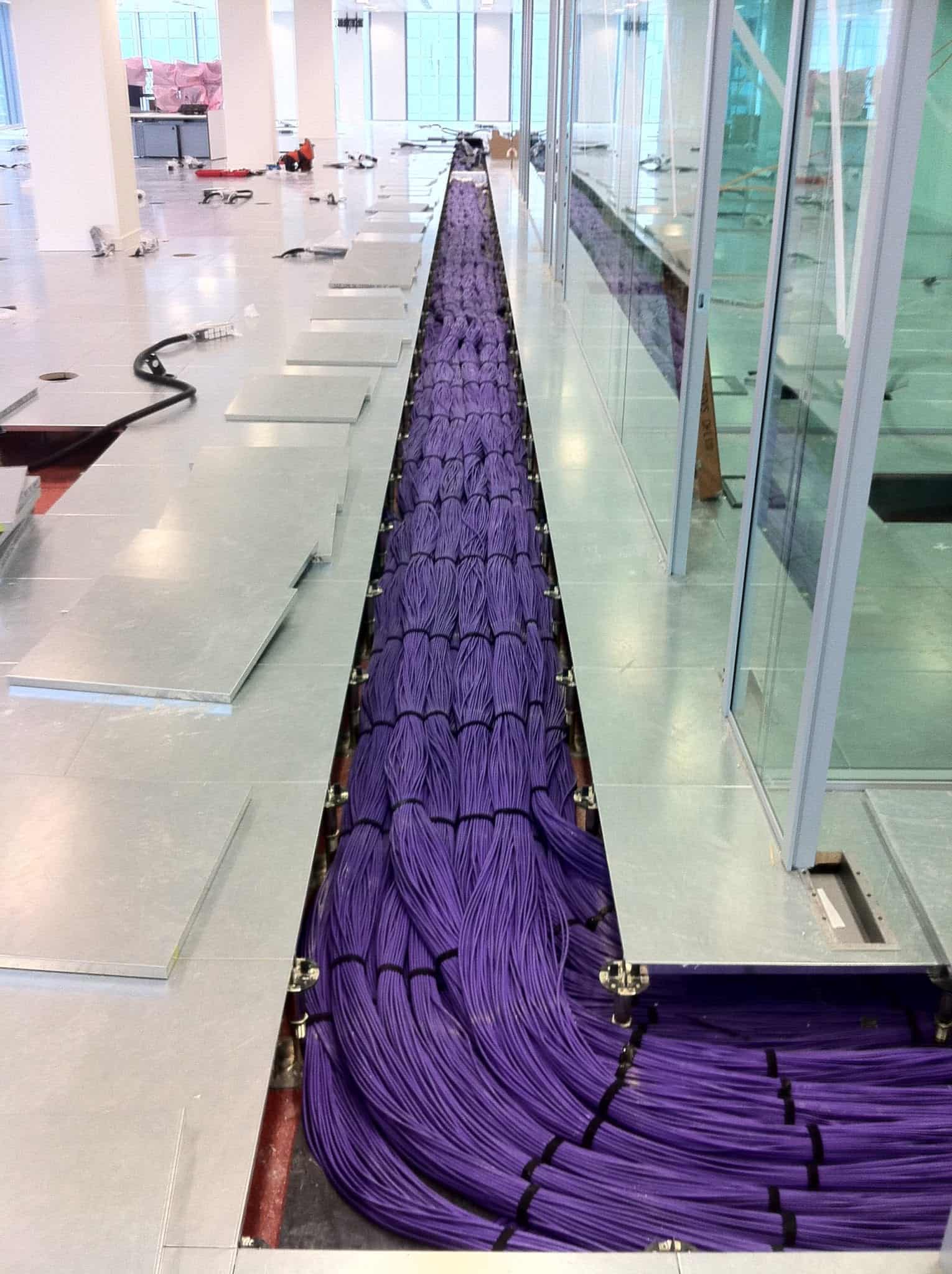
While there are dozens of cable types currently in use for data and telecom network cabling, they all fall within three classes, differentiated by the transmission media (i.e. what material carries electrical signals), and by how the transmission medium is shaped.
These three common classes are:
The material and build determine how much the cable costs, how it’s installed and verified, and many other operational parameters – but it also dictates how it behaves. In particular, it determines:
There are several types of cable within each class, and modern company networks routinely use cables from all these three classes.
The most familiar one is twisted-pair cable, which is used on virtually all office floors. Fibre cable is used primarily for long-distance cabling, such as telecom and outdoors security equipment, and for high-bandwidth applications, such as data centre cabling. Coaxial cabling, while rarely used for computer data networking anymore, is still used for CATV and some radio applications.
Twisted-pair cable is the one that most of us know as “the network cable”. In fact, there are many different types of twisted-pair cable, and choosing the correct one is not always straightforward. It is, however, an important decision, as twisted-pair cable is the fabric of user-facing office network, so it can have a great influence over the efficiency of a company’s daily operation – and form a large percentage of a network’s cabling cost.
Twisted-pair cable gets its name from the fact that it is made of multiple pairs of wires that are twisted around each other. In each of these pairs, one wire carries the signal, and the other one is used as a “ground reference” – that is, one wire “carries” the voltage to be interpreted as a data signal, and the other one is used by the devices at the two ends of the cable in order to agree what 0 volts means.
The cables are twisted around each other in order to reduce the influence that outside interference has (without going into the hairy physics, this works because interference is proportional to the surface between the wires, and the best way to keep surface to a minimum is to twist the wires tightly around each other).
In some applications, even this has turned out not to provide enough immunity – so engineers have also added a layer of metallic shielding around the twisted pairs of cabling. This is called Shielded Twisted-Pair cable (STP), in contrast to its unshielded (and, thus, less immune to interference) sibling, Unshielded Twisted-Pair cable (UTP). UTP cable is the one that is most widely used in office floors.
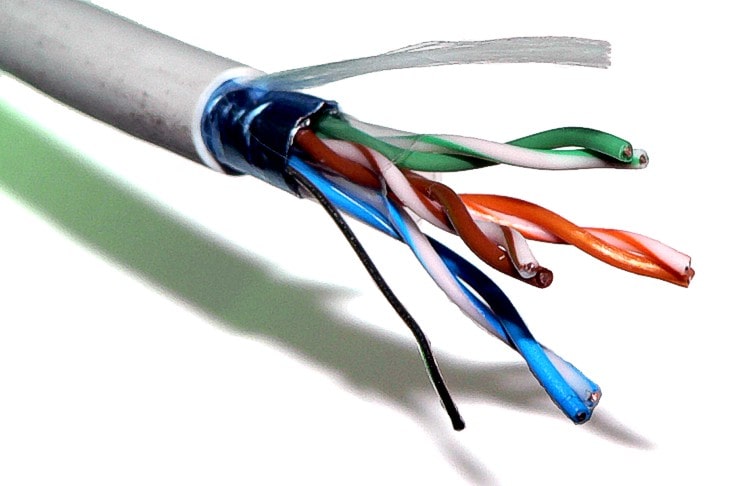
There are seven categories of twisted-pair cabling that have been developed, for various applications. Some of these seven categories are only of historical interest today, and others are used only in very specific niches; the most important ones are:
Cat1 and Cat2 are only of historical interest today (Cat2 installations still exist, but no new installations have been done in the UK since the late 1980s). Cat4 cable has only seen a brief period of use, too. Cat7 is a type of shielded cable used for high-speed applications and/or high-interference environments, such as industrial floors or CATV (learn more about CAT 7 cable installation). Finally, Cat8, which was recently introduced, is intended for short-range, data-intensive applications, such as data centres, not for general office cabling installations (learn more about having a Cat8 cable installation).
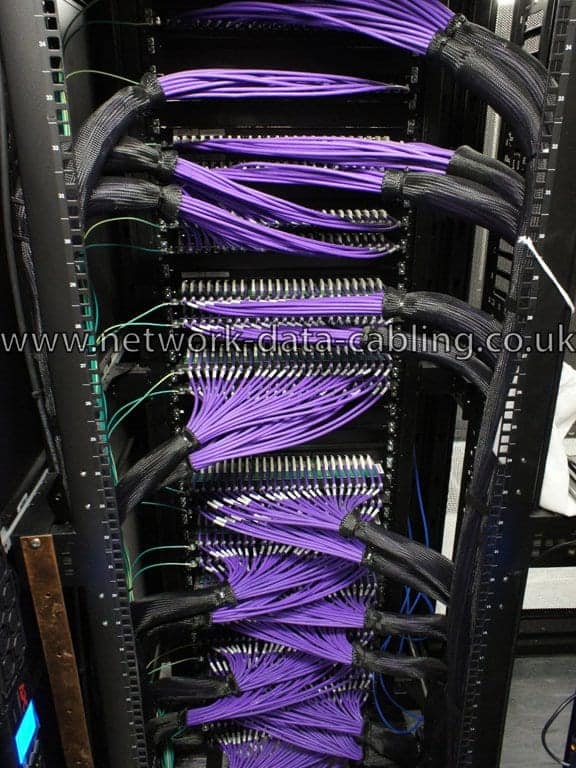
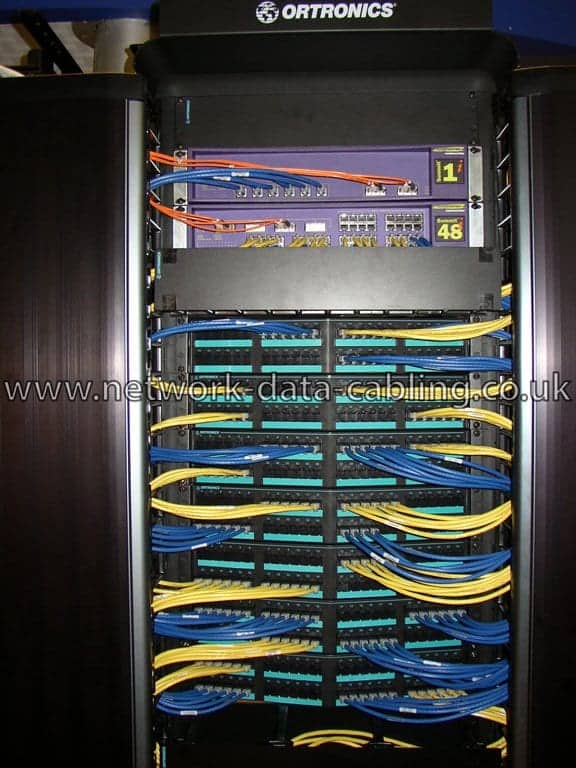
How is the right cable choice made? This is a trade-off between three parameters:
Fibre optic cables use a very different transmission principle. A fibre optic cable made of a long strand of glass-like material, called the core, coated by a cover called cladding. The cladding protects the core, but the cladding material is not chosen only for its protective characteristic: one of its properties, called refractive index, is chosen so that, when a light beam traveling through the core hits the cladding under a specific angle, it is reflected almost entirely, with very little of its energy being lost through scattering or refraction.
Thus, as long as we can keep the core thin enough, and direct a beam of light well enough as it enters the core, we can carry it over very long distances, with very little degradation. Indeed, some fibre optic cables can carry 10 Gbps signals over distances of up to 10 kilometers.
However, these remarkable capabilities come at a cost: computers, printers and phones use electrical, not optical signals. Somehow, electrical signals need to be converted into light – and then from light back into electrical signals. The transceivers that do this are quite costly; and, compared to copper, so is the fibre itself.
There are two major categories of fibre optic cabling: multimode and singlemode. The “modes” in the name refers, more or less, to the number of paths that rays can take through the core. Multimode cables are thicker and allow multiple propagation paths, which in turn allows for the use of relatively cheap light sources in the transceivers, thus reducing their cost. However, signals attenuate more quickly, and can therefore be transmitted over lower distances. Singlemode fiber optic cabling only allow one light path, thus minimizing attenuation, but require high-quality light sources and, thus, more expensive transceivers.
Multimode cables – OM1, OM2, OM3 and OM4 – all work at up to 10 Gbps, and OM3/4 also work at 40 Gbps. OM1, OM2 and OM3 are the ones that see most use in small- and medium-sized networks. OM4 is used for high-speed interconnects in data centers and corporate campuses. Singlemode cables – OS1 and OS2 – are primarily used for long-distance, high-speed links. OS1 is meant for indoor use, though, whereas OS2 can be used for outdoors installations as well.
Fibre optic cables have very specific connection and installation requirements. Splicing cables, for example, requires careful aligning of the cores, and certain types of cable, such as OS2, cannot be bent indefinitely. Fibre optic tends to be somewhat more fragile than copper – but it is also very light.
Usually, fibre optic is what you will want to go with for long-distance deployments. Fibre optic is a very cost-effective solution in these cases, and requires a far less complex installation that copper-based deployments. They are also a good option for high-speed core networks, data centre interconnects and for security systems.
Coaxial cable is rarely seen in compute data networks today, but it is still used for many TV and radio applications, so we will cover it here as well. Coaxial cable uses a central wire strand, called the core, which is coated with an insulating layer, and then with another conductive surface that serves as a ground reference. This second conductor is coated with an insulating material that also provides physical protection.
Coaxial cable has excellent bandwidth (higher, in fact, than twisted-pair cables), but the signal attenuates at a much higher rate. In time, this has limited the use of coax cable to digital telephone networks and TV applications, such as CATV and some older CCTV systems.
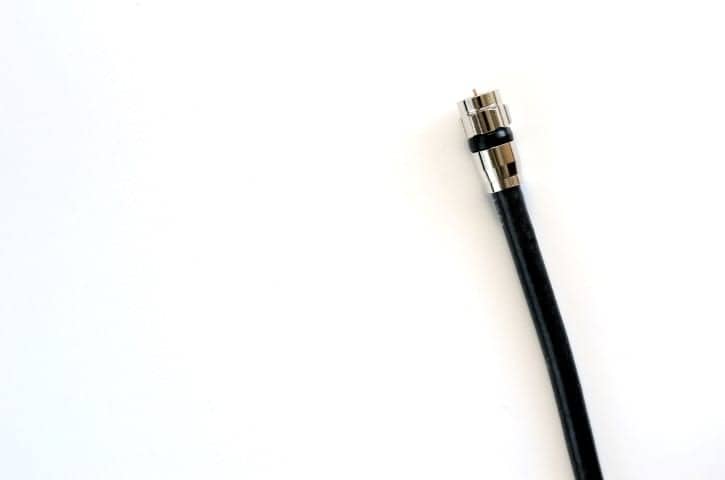
Choosing between various types of cables for a modern building is far more challenging than it may look in theory. In practice, it takes years of experience working on the most diverse of cabling projects to be able to choose the right cables. Performance, costs, scalability and durability are just a few of the factors that a cabling engineer has to take into account when choosing cables for a given building.
This is why at ACCL we only hire skilled and experienced engineers and technicians. Furthermore, they are continuously trained on the most recent development in the field. This way, all our clients know that their project is in the best of hands.
If you have any additional questions about choosing the right type of cable installation for your modern building, get in touch with us. We’d be happy to answer your questions and provide a free estimate for your project.
Services mentioned: Data Cabling installation, Ethernet cable installation
Related topics: Choosing cabling installers